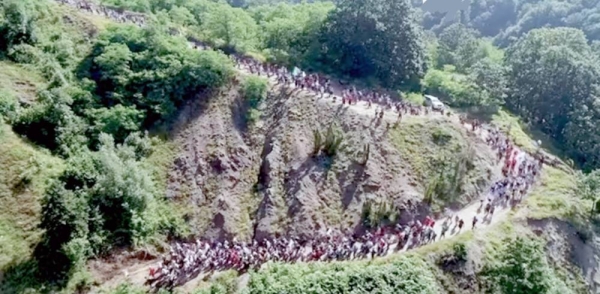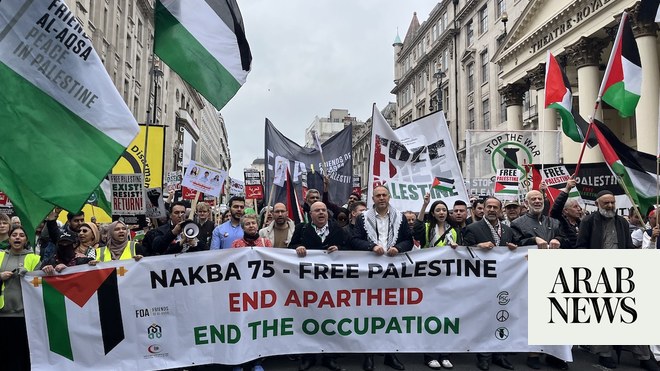
Annual march covers a 100-kilometer (62-mile) route to Srebrenica from the village of Nezuk, where the first survivors arrived
Bosnian Serb forces captured Srebrenica — a UN protected enclave at the time — on July 11, 1995, and killed 8,000 Muslim men and boys
NEZUK, Bosnia and Herzegovina: Thousands of people began marching on Monday toward Srebrenica in eastern Bosnia to mark the anniversary of the 1995 genocide, the worst massacre in Europe since World War II.
The annual march covers a 100-kilometer (62-mile) route to Srebrenica from the village of Nezuk, where the first survivors arrived.
Bosnian Serb forces captured Srebrenica — a UN protected enclave at the time — on July 11, 1995, and killed 8,000 Muslim men and boys.
The atrocity was deemed genocide by two international courts.
Fatima Ibrahimbegovic Alic told AFP her father, Ramiz, was killed trying to escape.
“I go for him, for all of them, to walk this path where they suffered,” she said.
“We need to keep doing this so we never forget.”
Carrying Bosnian, Palestinian and Turkish flags, the marchers will stop at the sites of dozens of mass graves where the remains of victims were found.
“We are here so that Srebrenica never happens again, anywhere ... that everyone knows” about the crime, said Azra Barakovac, a woman who arrived from Sarajevo to march for the first time.
Marcher Resid Dervisevic is one of the rare massacre survivors. In July 1995, he and his eight male relatives fled Srebrenica, running through the woods. His brother, an uncle and six nephews were killed during the escape.
Returning to the scene “brings back emotions, even in the days before this march,” the 64-year-old said holding back tears.
But it is easier to do it now than in 1995 “under a rain of bullets and shells — hungry, barefoot, without sleep for days,” he added.
“I walked for seven days through the forest. I survived on 250 grams of sugar.
“And when we arrived here, on this territory, people welcomed us by giving us everything they had to eat and drink.”
In late May, the United Nations General Assembly established an annual day of remembrance for the 1995 Srebrenica genocide.
The move drew fierce opposition from the Serbian government and Bosnian Serb leaders, who play down the atrocity and refuse to accept it as a genocide.
“We want to dedicate this march to all the people who did not manage to save themselves and who were killed in the Srebrenica genocide,” Ela Rehic, 14, who joined the march with her mother, said.
“It will certainly be difficult to march for three days, but I want to see and experience a bit of what I learned about their flight from Srebrenica.”
Tofik Sejdic, like Rehic, was born after 1995 and said he felt very emotional.
“It’s important not to forget what happened in those years in our country, especially in Srebrenica.
“For our people, for me, Srebrenica is sacred,” the 24-year-old man said.
In late May, the United Nations General Assembly established an annual day of remembrance for the 1995 Srebrenica genocide.
The move drew fierce opposition from the Serbian government and Bosnian Serb leaders, who play down the atrocity and refuse to call it a genocide.
The marchers will reach the memorial center in Potocari, where nearly 7,000 massacre victims were buried, on Wednesday.
They will attend a ceremony to mark the atrocity’s 29th anniversary the next day.
Bosnia’s war 1992-1995 between its Croats, Muslims and Serbs claimed approximately 100,000 lives.
Nearly three decades since the war ended, the Balkan nation remains deeply divided along ethnic lines.











